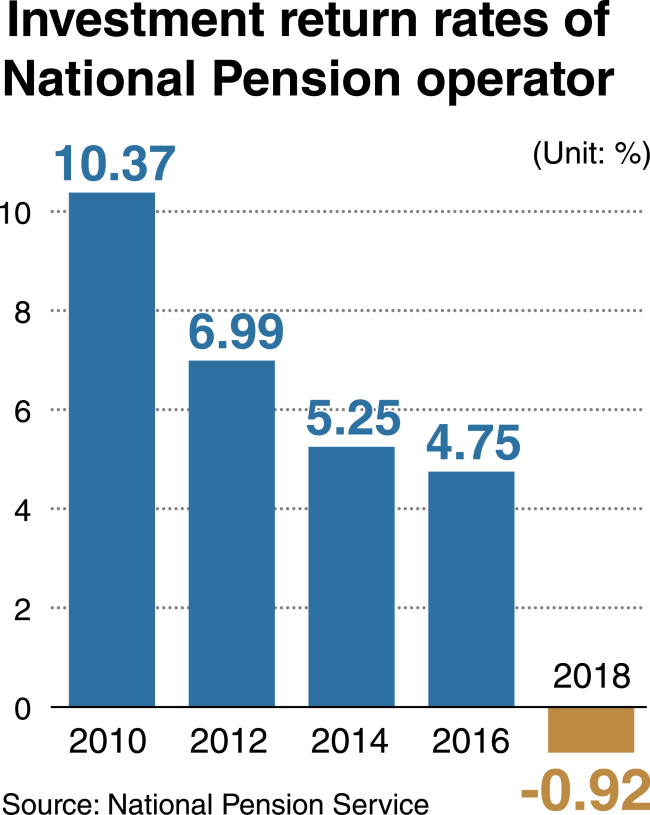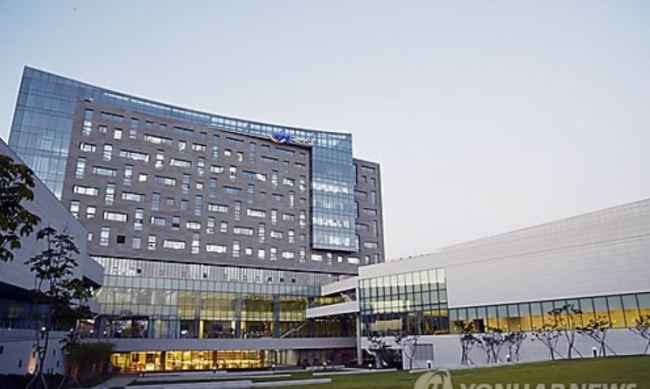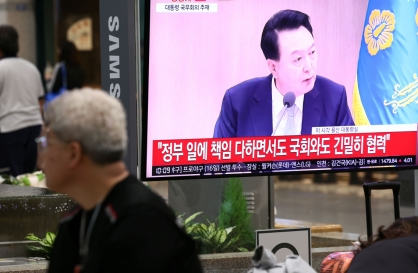[News Focus] Public worries mount over National Pension despite commitment to high returns
By Kim Yon-sePublished : March 12, 2019 - 16:06
SEJONG -- The National Pension Service clarifies on its homepage that people will receive far higher payments in their 60s compared to their insurance premiums, which are 9 percent of their monthly income.
The nation’s largest pension operator claims the higher payment system to policyholders is attributable to its re-assessment on payments to each individual by reflecting the growth in consumer prices and income.
“There is no pension product (involving private pensions) in the local market, which offers higher return rates than (the state-run) National Pension,” it specifies via its online commitment.
The NPS also says some arguments that citizens would receive “less payments, compared to their premiums (to the pension operator)” is due to “misunderstanding.” And it calls for citizens to make sincere payment of premiums.
Policyholders are required to pay premiums for minimum 10 years to enjoy the payments from the government agency when their age reaches 60-65 (initial payment timing is different according to generations).
But over the past decade or more, a large proportion of people have continued to raise doubts over the operator and the government’s ability to pay up in the coming decades.
A major concern has been that the state fund might be exhausted in the 2060s or 2050s under the current calculation method for payments and fund management performance.
In 2018, the NPS reported a loss on its investments in stocks and bonds for the first time since 2008, when the market was hit by the global financial crisis.
According to its regulatory filing, the fund operator’s return on its funds was minus 0.92 percent last year, which is a loss of about 5.9 trillion won ($5.2 billion). The 2018 loss was even greater than the 2008 figure of minus 0.18 percent.
Though the fund operator yielded positive returns from its investment in domestic bonds -- 4.8 percent --and alternative investment targets such as real estate and venture start-ups -- 11.8 percent -- its stock investments logged a huge loss.
The pension incurred a loss of 22 trillion won in the local bourse for a return rate of minus 16.7 percent. In addition, its investment in overseas stocks resulted in minus 6.1 percent profitability.
The nation’s largest pension operator claims the higher payment system to policyholders is attributable to its re-assessment on payments to each individual by reflecting the growth in consumer prices and income.
“There is no pension product (involving private pensions) in the local market, which offers higher return rates than (the state-run) National Pension,” it specifies via its online commitment.
The NPS also says some arguments that citizens would receive “less payments, compared to their premiums (to the pension operator)” is due to “misunderstanding.” And it calls for citizens to make sincere payment of premiums.
Policyholders are required to pay premiums for minimum 10 years to enjoy the payments from the government agency when their age reaches 60-65 (initial payment timing is different according to generations).
But over the past decade or more, a large proportion of people have continued to raise doubts over the operator and the government’s ability to pay up in the coming decades.
A major concern has been that the state fund might be exhausted in the 2060s or 2050s under the current calculation method for payments and fund management performance.
In 2018, the NPS reported a loss on its investments in stocks and bonds for the first time since 2008, when the market was hit by the global financial crisis.
According to its regulatory filing, the fund operator’s return on its funds was minus 0.92 percent last year, which is a loss of about 5.9 trillion won ($5.2 billion). The 2018 loss was even greater than the 2008 figure of minus 0.18 percent.
Though the fund operator yielded positive returns from its investment in domestic bonds -- 4.8 percent --and alternative investment targets such as real estate and venture start-ups -- 11.8 percent -- its stock investments logged a huge loss.
The pension incurred a loss of 22 trillion won in the local bourse for a return rate of minus 16.7 percent. In addition, its investment in overseas stocks resulted in minus 6.1 percent profitability.

Considering that its average return rate comes to 5.24 percent over the past 30 years since 1988 (7.26 percent in 2017), the poor performance in 2018 is further undermining policyholders nationwide.
Some researchers warn that the nation could see the fund run out of money 10 months earlier than otherwise if the return rate falls by 0.1 percentage point from its initial yearly target.
This situation brought about predictions among some researchers that the national fund may be exhausted as early as 2057, which is three years earlier than its earlier estimate.
Amid worsening criticism among ordinary people involving salaried workers, the Ministry of Health and Welfare unveiled four kinds of options for a pension reform last year.
But the ministry has yet to single out an option, which is to be proposed to the National Assembly, as there is little progress in reaching social consensus among a variety of representatives from sectors including labor, civic groups and business employers. They have been holding a series of discussions since last November.
Some labor and civic group representatives reportedly demand an option of “paying more and receiving more” by raising the premiums from the current 9 percent of income up to 12-13 percent.

But a poll from the Health and Welfare Ministry showed that the majority, or 47 percent, of surveyed people supported an option that keeps premiums at 9 percent.
“A hurdle for adopting an option is that political parties appear to be taking a wait-and-see position ahead of the 2020 general elections,” said a research analyst in Yeouido, Seoul.
He cited the failure of a pension reform plan, pushed during the former Roh Moo-hyun administration.
The option of “paying more and receiving more,” which had been proposed by the Roh government, eventually failed to pass the National Assembly amid conflict among lawmakers at that time.
Some market insiders allege that no options -- including a hike or freezing premium level – would completely dispel worries of depletion before 2064. They say the gloomy outlook lies in the declining number of policyholders and growing number of recipients.
Refund of National Pension premiums before payers become 60 is not available unless they renounce South Korean citizenship.
By Kim Yon-se (kys@heraldcorp.com)







![[From the Scene] Monks, Buddhists hail return of remains of Buddhas](http://res.heraldm.com/phpwas/restmb_idxmake.php?idx=644&simg=/content/image/2024/04/19/20240419050617_0.jpg&u=20240419175937)






![[From the Scene] Monks, Buddhists hail return of remains of Buddhas](http://res.heraldm.com/phpwas/restmb_idxmake.php?idx=652&simg=/content/image/2024/04/19/20240419050617_0.jpg&u=20240419175937)

![[KH Explains] Hyundai's full hybrid edge to pay off amid slow transition to pure EVs](http://res.heraldm.com/phpwas/restmb_idxmake.php?idx=652&simg=/content/image/2024/04/18/20240418050645_0.jpg&u=20240419100350)

![[Today’s K-pop] Illit drops debut single remix](http://res.heraldm.com/phpwas/restmb_idxmake.php?idx=642&simg=/content/image/2024/04/19/20240419050612_0.jpg&u=)